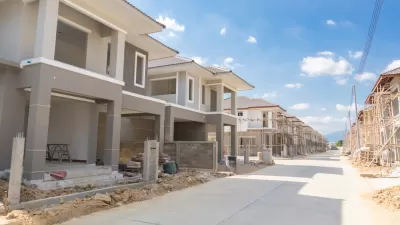It’s difficult to know who owns property because corporate landlords and investors tend to structure their business as limited liability companies, or LLCs.

You should be able to know who your neighbors are. This may seem like a relatively obvious statement, but people and communities across the country are finding it harder to do this, in large part due to the increasing role of financialization in housing. Financialization refers to the increasing importance of finance in everyday life; in housing, it’s partially driven by financial firms that are increasingly intertwined with the ownership and operation of residential housing as landlords, lenders, and investors. Scholars who study financialization have found that large corporate investors can shape rental pricing increases, defer maintenance, decrease neighborhood stability, and increase vacancy and eviction rates. However, they do it at a distance, in an abstract and not transparent way.
[RELATED: What is the Financialization of Housing?]
That is to say, when a large corporate investor is your landlord, or an investment vehicle forecloses on a home in your neighborhood, it’s often hard to know who or what owns the property due to the use of limited liability companies (LLCs). LLCs are a type of business structure that enable the owner to enjoy the limited liability benefits of a corporate structure while still receiving the tax benefits of a partnership. While the exact legal definition of LLCs varies slightly by state, this core definition is present nationwide. This makes LLCs an excellent option for business ventures that are owned by single individuals or small groups, as is often the case for investor-owned real estate. However, this business form, when extended to the ownership of real property, makes it hard to know who actually owns housing.
The same qualities that make LLCs attractive to smaller-scale owners make them an attractive vehicle for large corporate investors looking to buy hundreds of properties without attracting attention. When a private equity firm or large corporate landlord uses residential housing as collateral, often the formal owner of the property is an anonymous LLC, one per property. It’s difficult to accurately quantify and trace the scope of this phenomenon because there is no transparency. As these financial practices accelerate, the number of homes with untraceable or difficult-to-trace ownership proliferates. Regardless of investor size or type, LLC ownership of real property can create problems at the local level for tenants, neighbors, and municipalities.
The percentage of rental units owned by non-individual investors (in addition to LLCs, these also include corporate forms like limited partnerships and real estate investment trusts) rose from 17.3 percent in 2001 to 24.5 percent in 2015. In most states, LLCs are required to list a registered agent who can receive...
FULL STORY: When Landlords Hide Behind LLCs

Planetizen Federal Action Tracker
A weekly monitor of how Trump’s orders and actions are impacting planners and planning in America.

San Francisco's School District Spent $105M To Build Affordable Housing for Teachers — And That's Just the Beginning
SFUSD joins a growing list of school districts using their land holdings to address housing affordability challenges faced by their own employees.

The Tiny, Adorable $7,000 Car Turning Japan Onto EVs
The single seat Mibot charges from a regular plug as quickly as an iPad, and is about half the price of an average EV.

Seattle's Plan for Adopting Driverless Cars
Equity, safety, accessibility and affordability are front of mind as the city prepares for robotaxis and other autonomous vehicles.

As Trump Phases Out FEMA, Is It Time to Flee the Floodplains?
With less federal funding available for disaster relief efforts, the need to relocate at-risk communities is more urgent than ever.

With Protected Lanes, 460% More People Commute by Bike
For those needing more ammo, more data proving what we already knew is here.
Urban Design for Planners 1: Software Tools
This six-course series explores essential urban design concepts using open source software and equips planners with the tools they need to participate fully in the urban design process.
Planning for Universal Design
Learn the tools for implementing Universal Design in planning regulations.
Smith Gee Studio
City of Charlotte
City of Camden Redevelopment Agency
City of Astoria
Transportation Research & Education Center (TREC) at Portland State University
US High Speed Rail Association
City of Camden Redevelopment Agency
Municipality of Princeton (NJ)





























